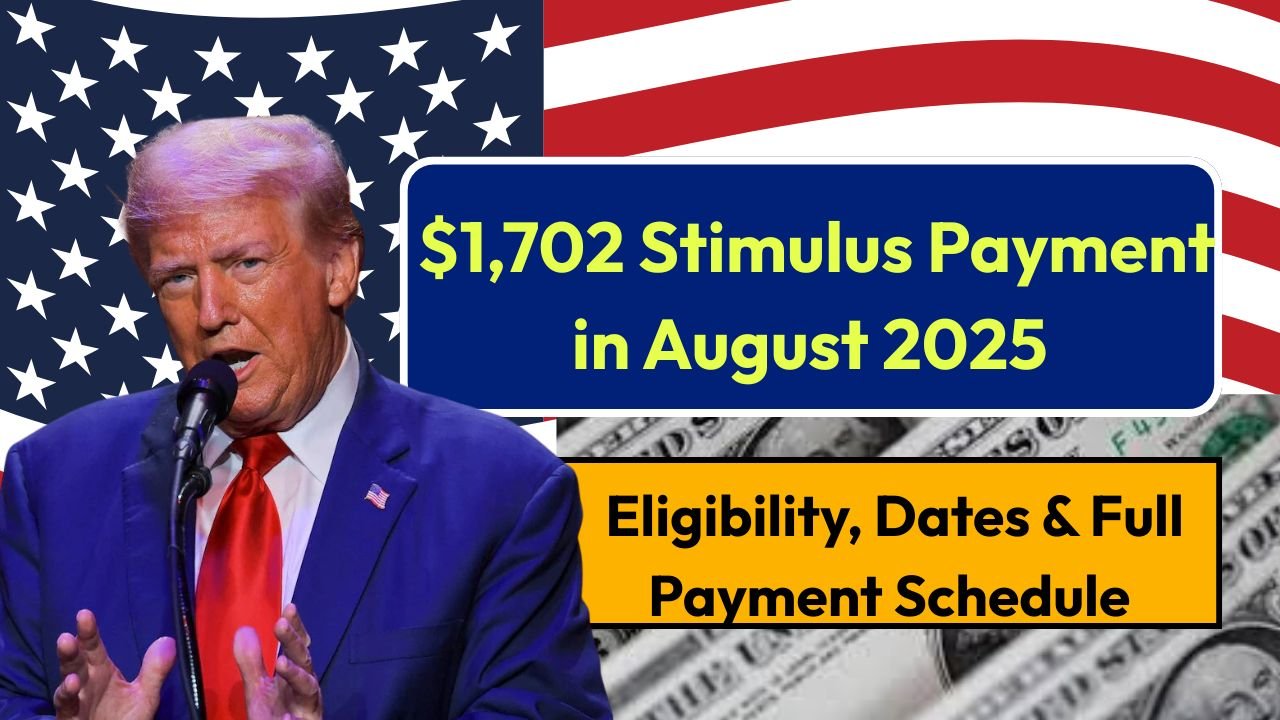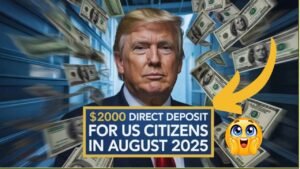Could $1,702 land in your account this month? For millions of Americans, the August 2025 stimulus payment is on the way, but not everyone will get it on the same date. The IRS and Social Security Administration (SSA) have published the full schedule, and it’s creating a lot of buzz across the country.
Here’s everything you need to know about who qualifies, when payments arrive, and how to make the most of your deposit.
What Is the $1,702 Stimulus Payment?
The $1,702 stimulus payment is a direct cash benefit meant to help citizens handle rising costs of living, food, gas, and housing.
While many think of it as a “stimulus check,” this payment is actually tied to monthly Social Security, SSI, and SSDI benefits being released in August 2025.
A Quick History of Stimulus Payments
Government relief payments aren’t new. During the COVID-19 pandemic, millions of Americans received direct deposits to keep households stable and boost the economy.
Since then, federal and state agencies have continued offering targeted support — especially to seniors, veterans, and low-income families. The 2025 payment structure is part of this ongoing effort.
Why the August 2025 Payment Matters
For many households, $1,702 isn’t just money — it’s financial relief.
- For some, it prevents falling behind on rent or bills.
- For others, it reduces debt or provides groceries and essentials.
- And for retirees, it helps maintain stability during uncertain economic times.
August 2025 Stimulus Payment Schedule
Here’s the official August 2025 payment calendar:
| Group | Payment Date | Who Receives It |
|---|---|---|
| Social Security Recipients (before May 1997) | August 1, 2025 | Automatic direct deposit |
| SSI Beneficiaries | August 2, 2025 | Early payment |
| Birth Dates 1–10 | August 14, 2025 | Social Security retirees |
| Birth Dates 11–20 | August 21, 2025 | Social Security retirees |
| Birth Dates 21–31 | August 28, 2025 | Social Security retirees |
Who Qualifies for the $1,702 Payment?
Eligibility is automatic for most people already receiving benefits. This includes:
- Social Security retirees
- SSI and SSDI recipients
- Veterans’ benefit recipients
In some cases, low-income working families may also qualify depending on state rules. Income thresholds and residency requirements may vary.
Smart Ways to Use Your $1,702 Payment
Instead of spending quickly, financial experts suggest treating this deposit strategically.
| Option | Short-Term Benefit | Long-Term Gain |
|---|---|---|
| Paying Bills | Avoids late fees | Protects credit score |
| Buying Essentials | Covers food & utilities | Improves quality of life |
| Saving | Provides backup | Builds financial security |
| Investing | Potential growth | Wealth building |
| Debt Repayment | Lowers interest | Frees up future income |
Interesting Facts About the $1,702 Stimulus
- $1,702 is the average Social Security benefit in 2025
- Over 60 million Americans are expected to receive it in August
- Direct deposits arrive 3–5 days faster than paper checks
- Some states are adding extra relief alongside the federal payment
How to Make Sure You Get Paid on Time
- Set up direct deposit with SSA to avoid mailing delays
- Use the SSA online portal to track your payment
- Never share your banking info — the SSA and IRS will not call asking for it
- If your payment is late, contact SSA or your state benefits office immediately
FAQs – August 2025 $1,702 Payment
Q: Do I need to apply for this payment?
No, payments are automatic if you already qualify.
Q: Can working Americans receive this payment?
Yes, but only if they meet federal or state eligibility requirements.
Q: What should I do if my payment doesn’t arrive?
First, check your direct deposit details and use the SSA portal. If it’s still missing, contact the SSA directly.
Final Thoughts
The $1,702 stimulus payment for August 2025 is more than just a deposit — it’s a financial lifeline for millions of Americans.
With the schedule now confirmed, you can plan ahead, avoid delays, and use the money wisely. Whether you save it, pay down debt, or cover essentials, this payment offers a chance to strengthen your financial future before the next economic shift.



